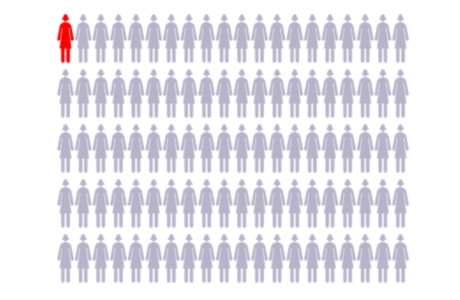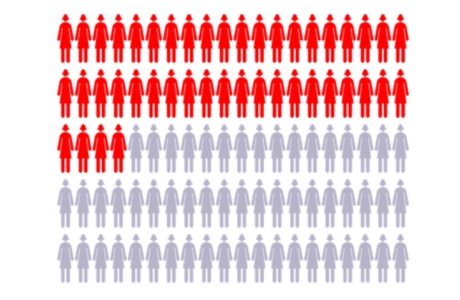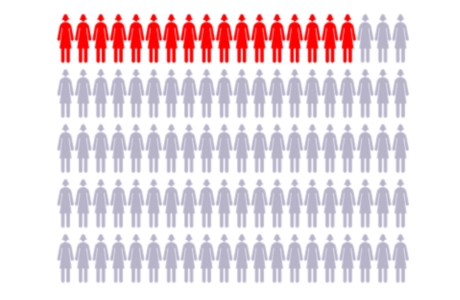Our Health Library information does not replace the advice of a doctor. Please be advised that this information is made available to assist our patients to learn more about their health. Our providers may not see and/or treat all topics found herein.
Ovarian cancer risk
Women with an average risk

Chart based on National Cancer Institute (2020). SEER Cancer Statistics Review 1975–2017. http://seer.cancer.gov/csr/1975_2017/. Accessed July 31, 2020.
On average, about 1 out of 100 women will get ovarian cancer sometime during their lives. Your risk may be higher or lower depending on different factors. It most often affects women who are past menopause. You may be more likely to get it if others in your family have had it. Also, some women inherit gene changes that increase their chances of getting it.
If you have female pelvic organs, talk to your doctor about your specific risks.
Women who have BRCA1 gene changes

Chart based on Kuchenbaecker KB, et al. (2017). Risks of breast, ovarian, and contralateral breast cancer for BRCA1 and BRCA2 mutation carriers. JAMA, 317(23): 2402–2416. DOI: 10.1001/jama.2017.7112. Accessed August 5, 2020.
The risk of ovarian cancer is higher than average for women who have BRCA1 gene changes. About 44 out of 100 of them will get ovarian cancer by age 80.
Women who have BRCA2 gene changes

Chart based on Kuchenbaecker KB, et al. (2017). Risks of breast, ovarian, and contralateral breast cancer for BRCA1 and BRCA2 mutation carriers. JAMA, 317(23): 2402–2416. DOI: 10.1001/jama.2017.7112. Accessed August 5, 2020.
The risk of ovarian cancer is also higher than average for women who have BRCA2 gene changes. About 17 out of 100 of them will get ovarian cancer by age 80.
Current as of: October 25, 2024
Author: Ignite Healthwise, LLC Staff
Clinical Review Board
All Ignite Healthwise, LLC education is reviewed by a team that includes physicians, nurses, advanced practitioners, registered dieticians, and other healthcare professionals.
This information does not replace the advice of a doctor. Ignite Healthwise, LLC disclaims any warranty or liability for your use of this information. Your use of this information means that you agree to the Terms of Use and Privacy Policy. Learn how we develop our content.
To learn more about Ignite Healthwise, LLC, visit webmdignite.com.
© 2024-2025 Ignite Healthwise, LLC.


